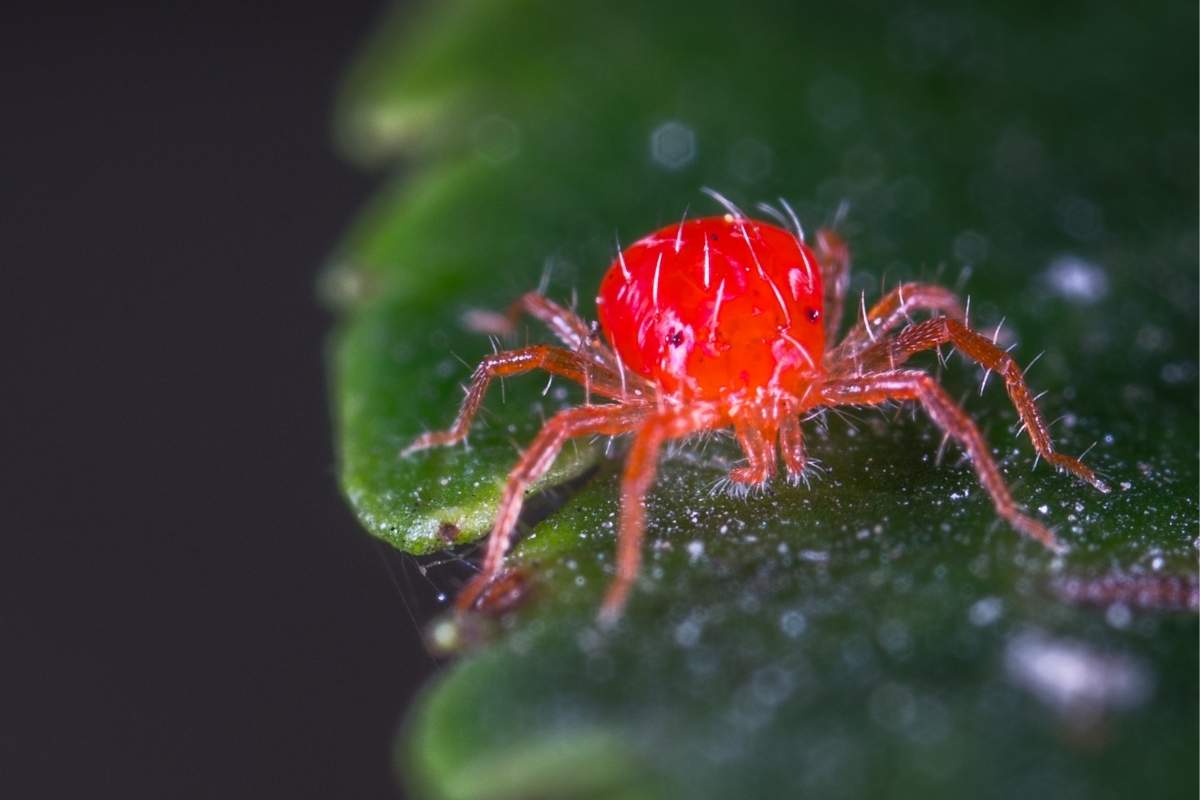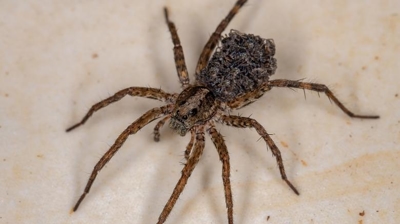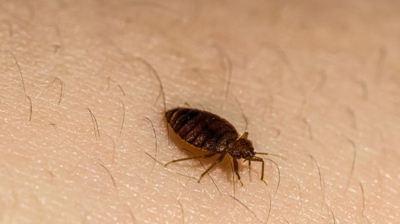
Are Mites Harmful?
Mites, which are tiny arthropods, can pose various risks to both humans and animals. Their harmful effects can range from physical damage to triggering allergic reactions or even transmitting diseases. Here are some of the ways in which mites can be considered harmful:
Allergic Reactions:
- Dust Mites: One of the most common types of mites that affect humans are dust mites. These mites thrive in warm, humid environments, particularly in bedding, carpets, and upholstered furniture. Their waste products and body fragments are potent allergens. People who are sensitive or allergic to dust mites may experience symptoms such as sneezing, nasal congestion, coughing, and asthma. These allergies can be chronic and significantly affect a person's quality of life.
- Mite Bites: Certain types of mites, such as the chigger mite, bite humans and animals. The bites cause intense itching, inflammation, and discomfort. In some cases, the bites can lead to secondary infections if scratched excessively.
Skin Irritation and Infection:
- Scabies Mites: Sarcoptes scabiei, commonly known as scabies mites, burrow into the skin, causing intense itching and inflammation. This condition is highly contagious and can spread through close contact. It results in a rash that often appears as red, raised bumps and is typically seen in the webbing of fingers, wrists, elbows, and genital areas.
- Mite-induced Dermatitis: Mites can also cause dermatitis, which is an inflammation of the skin, either through direct contact or due to an allergic reaction. The condition can result in rashes, swelling, and irritation, leading to further complications if left untreated.
Transmission of Diseases:
- Mite-Borne Diseases: Some mites are vectors for diseases. For example, the ornithonyssus mite can transmit Rickettsial pox, a bacterial infection that causes a rash, fever, and other flu-like symptoms. Mites like the chigger can also carry diseases that affect both animals and humans.
Mites can be harmful in a variety of ways, including causing allergic reactions, skin irritation, transmission of diseases, and economic losses. Proper management, such as frequent cleaning, controlling humidity, and pest control, is crucial in minimizing these risks.
Learn more: Do Mites Bite?
Mite Removal
Getting rid of mites is critical for human health, animal welfare, food safety, property protection, and overall environmental hygiene. Their small size and rapid reproduction make prompt and thorough action essential:
- Health Risks: Mites, depending on the species, can cause a variety of health issues. Dust mites, for example, are a major trigger for allergies and asthma, leading to symptoms such as sneezing, itchy eyes, nasal congestion, and difficulty breathing. Other mites, like scabies mites or bird mites, can bite humans, causing intense itching, rashes, and secondary skin infections from scratching. Eliminating mites is crucial to prevent these health complications.
- Contamination of Food and Surfaces: Some mites, such as grain mites or stored product mites, infest food supplies, leading to contamination and spoilage. Their presence can make food unsafe for consumption, result in economic loss, and create an environment conducive to mold or bacterial growth.
- Structural Damage: Certain mite species, particularly those that infest stored products, can indirectly cause damage to household items. For example, clover mites may invade homes in large numbers, and while they don’t bite, they can stain walls and fabrics, creating costly cleaning or repair issues.
- Animal Health: Mites can infest pets, livestock, and wildlife, leading to conditions like mange, skin irritation, hair loss, and secondary infections. Infested animals often suffer from discomfort, stress, and even weight loss or reduced productivity in agricultural settings. Controlling mites is essential to protect animal welfare and maintain economic stability for farmers or pet owners.
- Rapid Reproduction: Mites reproduce quickly, and infestations can escalate if not addressed promptly. A small, seemingly minor problem can turn into a major infestation, making eradication much more difficult and expensive over time. Early removal prevents long-term, large-scale infestations.
Mite infestations can create conditions that attract other pests or exacerbate mold and bacterial growth. Eliminating mites helps maintain a cleaner, healthier environment and prevents the spread of additional pest-related issues.
Learn more: How To Get Rid Of Mites
Mite Control
Mites may be tiny, but they can cause significant problems for both homes and businesses if not properly addressed. Our professional mite control is the most effective way to eliminate infestations and prevent them from returning. Here are some of the reasons why investing in professional mite control is the best choice:
- Accurate Identification of the Problem: There are many types of mites—such as bird mites, clover mites, dust mites, and rodent mites—and each requires a different control approach. Our professionals are trained to identify the specific species and tailor the treatment plan accordingly, ensuring the problem is handled at the source.
- Protects Health and Comfort: Mites can cause allergic reactions, skin irritation, and respiratory problems in people and pets. In businesses, they can affect employee comfort and even trigger complaints or health concerns. Our professional treatments reduce these risks by removing the infestation quickly and safely.
- Targeted Treatment Solutions: Store-bought sprays or DIY remedies often only address the surface issue. Our pest control experts use proven methods and advanced products that eliminate mites at all life stages, including hidden eggs and larvae, for long-lasting results.
- Prevention of Reinfestations: Mites often return if the root cause—such as bird nests, rodent activity, or moisture issues—is not addressed. Our professionals not only eliminate the mites but also identify and correct the underlying conditions that allow them to thrive, reducing the risk of recurring infestations.
- Protection for Property and Reputation: In homes, mites can create ongoing discomfort and damage fabrics or furnishings. In businesses such as hotels, offices, or healthcare facilities, a mite problem can quickly harm reputation, leading to complaints, bad reviews, or even regulatory issues. Our professional control protects both property and public image.
- Safe and Efficient Solutions: Mite infestations can be difficult to treat without professional-grade products, which are both more effective and applied in a way that’s safe for people, pets, and the environment. Our professionals know how to eliminate mites thoroughly without putting your household or staff at risk.
Our professional mite control gives you peace of mind, long-term protection, and a healthier environment—something DIY methods rarely achieve.
Mite Exterminators
Here’s why hiring our local exterminators is more effective than going with a national company for mite infestations:
- Expertise with Local Pest Species: Mites vary widely depending on region and climate. Our local exterminators are familiar with the species most prevalent in the area, their habits, breeding cycles, and seasonal activity. National companies rely on standardized treatments that do not account for regional variations, potentially reducing effectiveness.
- Tailored Treatment Plans: Our local experts assess your specific environment—home layout, humidity, pets, and yard conditions—to design a customized eradication plan. Generic protocols from national companies may overlook critical factors, like microclimates in your home that favor mite survival.
- Faster Response Time: Our local exterminators can schedule appointments more quickly, reducing the window in which mites can multiply. National companies often have centralized call centers and limited local technicians, causing delays that allow infestations to worsen.
- Knowledge of Local Regulations and Safety Standards: Pesticide regulations differ by state or municipality. Our local exterminators are familiar with approved chemicals and application limits for the area. This minimizes risk to your family, pets, and the environment, and ensures compliance with local laws.
- Ongoing Support and Follow-Up: Mite infestations often require monitoring and follow-up treatments. Our local exterminators provide prompt repeat visits and on-site troubleshooting if the initial treatment doesn’t fully eradicate the problem. National companies often have rigid protocols for follow-ups, limiting flexibility and responsiveness.
- Community Reputation and Accountability: Our local team relies heavily on word-of-mouth and our community reputation, motivating us to ensure your complete satisfaction. National companies may treat each service with less personal accountability for outcomes.
For mites—which reproduce quickly and can be difficult to completely eradicate—our local exterminators' knowledge of the specific species, microenvironment conditions, and ability to provide responsive, tailored follow-up is far more effective than a standardized national approach.
Mite Solutions
Our exterminators use Integrated Pest Management (IPM) to control mites because these tiny arachnids can infest homes, plants, and animals, causing irritation, allergic reactions, or damage to crops and stored products. IPM begins with a thorough inspection to identify the species of mite, the extent of the infestation, and the environmental conditions that favor their proliferation, such as high humidity, poor sanitation, or the presence of host plants or animals. Management strategies focus on habitat modification, including improving ventilation, reducing moisture, cleaning infested areas, and removing food or organic debris that supports mite populations. Targeted interventions, such as localized insecticide applications, miticides, or biological controls, are used only when necessary to minimize chemical exposure. Ongoing monitoring allows our exterminators to track activity, assess the effectiveness of control measures, and prevent reinfestation. By integrating inspection, habitat management, selective treatment, and monitoring, IPM provides a long-term, precise, and environmentally responsible approach to managing mite infestations.
What Do Mites Look Like?
Mites are tiny arthropods that are often difficult to see with the naked eye, depending on the species. They typically have oval or round bodies with eight legs in their adult stage. Their appearance varies based on species and habitat:
- Dust Mites – These microscopic pests are translucent white and have soft, oval bodies with short legs. They are too small to see without magnification.
- Spider Mites – These plant pests are red, brown, or green and are extremely tiny, often leaving behind fine webbing on plant leaves.
- Scabies Mites – These human parasites are microscopic and burrow under the skin, making them impossible to see directly, but their effects (itchy rash and burrows) are noticeable.
- Bird & Rodent Mites – These are visible to the naked eye, appearing as tiny black, red, or white specks that move across surfaces or skin.
- Chigger Mites – These are bright red, extremely tiny larvae that attach to skin and cause intense itching.
Where Are Mites Found?
Mites are tiny arthropods that can be found in various environments, both indoors and outdoors. Their habitats depend on the type of mite, but there are a few common places where you are most likely to encounter them:
- Bedding and Furniture: Dust mites are very common in bedding, pillows, mattresses, and upholstered furniture. They thrive in warm, humid environments and feed on skin flakes shed by humans and pets.
- Carpets and Rugs: Dust mites also inhabit carpets, rugs, and other fabric surfaces, as they provide both warmth and food sources (human and pet skin flakes).
- Air Ducts and HVAC Systems: Mites can live in air ducts, especially if there is accumulated dust. Poor ventilation and moisture in air systems can create ideal conditions for mites.
- Clothing: Certain mites, like the clothing or "clothes" mite, can be found in clothing, particularly in damp, dark environments such as basements.
- Gardens and Lawns: Some mites, such as plant-feeding spider mites, can be found on plants, trees, and shrubs, where they feed on the sap of plants. They can cause damage to crops and garden plants.
- Piles of Debris and Wood: Mites, including wood mites, are commonly found in piles of wood, leaves, and other organic debris. These areas provide a moist and sheltered environment that is ideal for mites.
- Bird and Animal Nests: Mites, such as the bird mite, can infest bird nests, and sometimes spread to other animals or even humans if they come into contact with the nests.
- Pet Fur: Some mites, such as the mange mite or ear mites, infest pets like dogs, cats, and rodents. These mites can cause skin irritation and hair loss in animals.
- Wildlife and Rodents: Rodents and other wildlife can carry mites, particularly in nests or burrows. These mites may spread to human habitats if rodents are present.
- Farm Animals: Certain mites, such as the poultry mite, are commonly found on farm animals, particularly in barns, coops, and stables. These mites may also bite humans who come into close contact with infested animals.
- In Dust and Soil: Mites like the soil mite or fungal mite can often be found in the soil, particularly in areas where there is a lot of organic matter like mulch, compost, or decomposing plants.
To minimize your chances of encountering mites, it’s important to regularly clean areas prone to dust accumulation, such as bedding, carpets, and air ducts, and manage humidity levels in your home to reduce the ideal environment for mites to thrive.
What Do Mites Eat?
Mites are a diverse group of arachnids, and their diet varies depending on the species. Generally, mites can be classified into different categories based on what they feed on:
- Plant-feeding Mites: These mites, such as spider mites (Tetranychidae), feed on plant material. They use specialized mouthparts called chelicerae to pierce plant cells and suck out the sap. This can lead to the weakening of the plant, often causing damage such as leaf discoloration, stippling, or even defoliation.
- Predatory Mites: Some mites, like those from the family Phytoseiidae, are predators. They primarily feed on other smaller mites, insects, and pest organisms such as aphids and scale insects. These mites are often used in biological pest control.
- Fungal-feeding Mites: Certain mites feed on fungi and mold, such as the house dust mite (Dermatophagoides spp.), which feeds on dead skin cells and mold particles.
- Decomposers: Some mites are scavengers or decomposers, consuming organic material like dead plants, animals, and decaying matter. These mites play a crucial role in the decomposition process.
- Parasitic Mites: Parasitic mites feed on the blood or tissue of their host organisms, such as birds, mammals, or reptiles. Examples include the mange mite (Sarcoptes scabiei), which causes scabies in humans and animals, and the ear mites that infest pets.
Mites can have a wide variety of diets depending on their type, ranging from plants and fungi to other mites, insects, or even blood and tissue from host organisms.
Mite Life Cycle
Mites, like many arthropods, undergo a life cycle that can vary slightly depending on the species, but it generally follows a similar pattern. The typical mite life cycle consists of four primary stages: egg, larva, nymph, and adult.
- Egg: The life cycle begins with the egg. Female mites lay eggs on surfaces where they can find a suitable environment for the developing larvae. The egg stage can last anywhere from a few days to several weeks, depending on the species and environmental conditions such as temperature and humidity.
- Larva: Once the egg hatches, the mite enters the larval stage. This stage is typically short, lasting only a few days to a week. Larvae have three pairs of legs (as opposed to adults, which have four pairs), and they are more mobile in search of food. During this stage, the mite may feed and grow, depending on the species and environment.
- Nymph: After the larval stage, mites molt into a nymph. Nymphs are similar in appearance to adult mites, except that they are smaller and not yet fully mature. They possess four pairs of legs and continue to feed and grow. The nymph stage can have multiple instars (developmental stages) where they molt several times before reaching adulthood.
- Adult: The final stage of the mite life cycle is adulthood. Adult mites are fully developed and can reproduce. Depending on the species, they can live for days to months. During the adult stage, they may continue to molt a few times throughout their lives, although they do not change significantly in form. Females typically produce eggs, completing the cycle.
Mites can reproduce rapidly, and in some cases, they may go through multiple generations within a short time frame, particularly in favorable environmental conditions. The life cycle duration varies, but it can range from a few weeks to several months, depending on factors like species and habitat.
Types of Mites
Mites are an incredibly diverse group of arachnids, with over 50,000 described species and potentially many more undiscovered ones. Here are some of the more common types of mites in our area:
- Chiggers: Chiggers are a type of trombiculid mite. The larval stage is parasitic on mammals, including humans. Chigger bites can result in intense itching and skin irritation, often in areas with tall grass and vegetation.
- Clover Mites: Clover mites are tiny, plant-feeding mites that often enter homes in search of moisture. They are harmless to humans but can be a nuisance when they become numerous indoors.
- Concrete Mites: Concrete mites, scientifically known as Balaustium spp., are tiny arachnids with a distinctive red or orange coloration and a velvety appearance. They primarily inhabit terrestrial environments, such as soil, leaf litter, and mosses, where they play a role as predators of small arthropods.

Hear From Our Happy Customers
-
"Professional & Considerate"
I’m pleased with Miche services. Jarvis came today. Professional and considerate. Thank you!
- Judy B. -
"Exceeds Expectations"
I can’t say enough positive things about this company... The tech that came out, Jarvis went above and beyond my expectations. Thank you guys, I will continue using your services.
- Jake M. -
"Very Knowledgeable"
The tech that arrived was courteous, professional, and very knowledgeable. He was Great.
- Uerial I. -
"Fantastic & Patient"
Jarvis was fantastic and patient. He answered my questions with an in-depth explanation and addressed all of my areas of concern. Would love for him to be my assigned tech going forward. Well done!
- Yonnette M. -
"Wonderful Service"
Wonderful service. Jarvis is great. Took care of everything I needed. Thank you!
- Henry P. -
"Great Communication"
Tech was on time, communication was great, and he accommodated my needs.
- Alonzo W.




